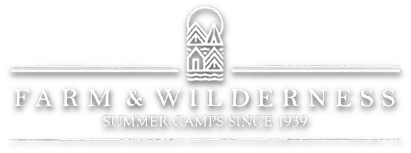We all know how special our patch of Vermont wilderness is.
Together, the Farm & Wilderness (F&W) and the Ninevah Foundation (NF) manage a combined 4,800 acres with glittering natural water bodies, trail areas, and diverse wildlife habitats. Conserving these treasured lands has always been a top priority – we are dedicated to ensuring the land, water, and air in this wilderness area remain healthy and resilient for the benefit of our Farm & Wilderness family, local community, and fellow Vermonters.
The Farm & Wilderness and Ninevah Foundation have had a long and successful shared history of managing swaths of forests through ecologically sustainable practices that mimic the same naturally occurring changes that occur as woodlands age while using this valuable renewable natural resource for locally sourced timber. Each year, we evaluate the need to harvest trees to create space for seedlings to flourish, encouraging new growth and a healthy forest. The harvested wood is primarily utilized in the local forest economy. Some even make their way to our local sawmill used in Farm & Wilderness building projects. The forest harvesting practices we follow are designed explicitly for Vermont landowners to ensure continued healthy growth of the forest while mitigating negative impacts on wildlife habitat and water quality.
Through the Ninevah Foundation specifically, we’ve made great strides in the past year in protecting and maintaining conserved forestland surrounding both Lake Ninevah and Saltash Mountain. The majority of the 3,000+ acres Ninevah Foundation manages are classified as high-priority when it comes to the ecological value and protection of valuable wildlife habitats in Vermont. The Forest Legacy conservation easements we hold in the towns of Mount Holly and Plymouth span a diversity of forest and habitat types including rich northern hardwood forest, hemlock groves, northern hardwood seepage forest, wetlands, open peatland, shrub swaps, vernal pools, mashes, sedge meadows, and so much more. Wildlife species of all sizes such as moose, otter, deer, bear, beaver, Eastern newts, painted turtles, monarch butterflies, and the common loon, make their homes on Farm & Wilderness and Ninevah Foundation lands and neighboring waterbodies.
We are proud to contribute to a vital collective contribution of non-profits across the state, making a lasting impact on our wilderness lands and the future of our regional ecosystem and planet.
Research-Based Land Management
Ethical land management requires building a foundation of sustainable and growth-minded management practices. This year, we carefully monitored ecologically sensitive areas, invasive and native plant growth patterns, began including carbon stocking data in our forest inventories, and increased our efforts to better understand the benefits and impacts of outdoor recreation on conserved lands. We also continue to implement an irregular shelterwood silviculture strategy. Irregular shelterwood is a forest harvesting practice that is used to promote ecosystem-based tree growth and regeneration.
Our efforts have been rewarded with thriving tree species populations of red maple, Eastern hemlock, red spruce, sugar maple, yellow birch, white ash, American beech, and more, while creating more opportunity to see an increased return of old-growth forest characteristics in the future, which used to dominate pre-European settlement forests in New England.
This work, coupled with staying up to date on the latest research-based land management guidance and collaborating with consulting ecologists and forestry professionals, has helped us fulfill our mission as a conservation organization in Vermont. This work will support our continued efforts to make meaningful actions for the future as we seek to mitigate the negative impacts of climate change, encourage responsible land use, and prioritize ecological health in our forests.
Forest Management Planning
Forest management planning is an important tool to prioritize our land management goals and stay current with the most ecologically sustainable best practices. Because we care for 4,800 acres, we have several forest plans specific to the unique needs of each section of forest, but that collectively provide a landscape-level perspective, which is the most beneficial when working towards conserving and connecting unfragmented stretches of forest. We received full approval for the Hall Reserve Forest Management Plan this past year, one section of our conserved lands sandwiched between our camps in Plymouth and the Coolidge State Forest. Next year, we will be updating our Woodward forest plan, which is the land that surrounds many of our camp facilities along Woodward Reservoir.
The lands we manage are rich in natural and cultural features. Our 10-year forest management plans provide a framework for leveraging the many incredible resources on this land to further our mission through goals for timber production, recreation, wildlife habitat management and protection, and education




